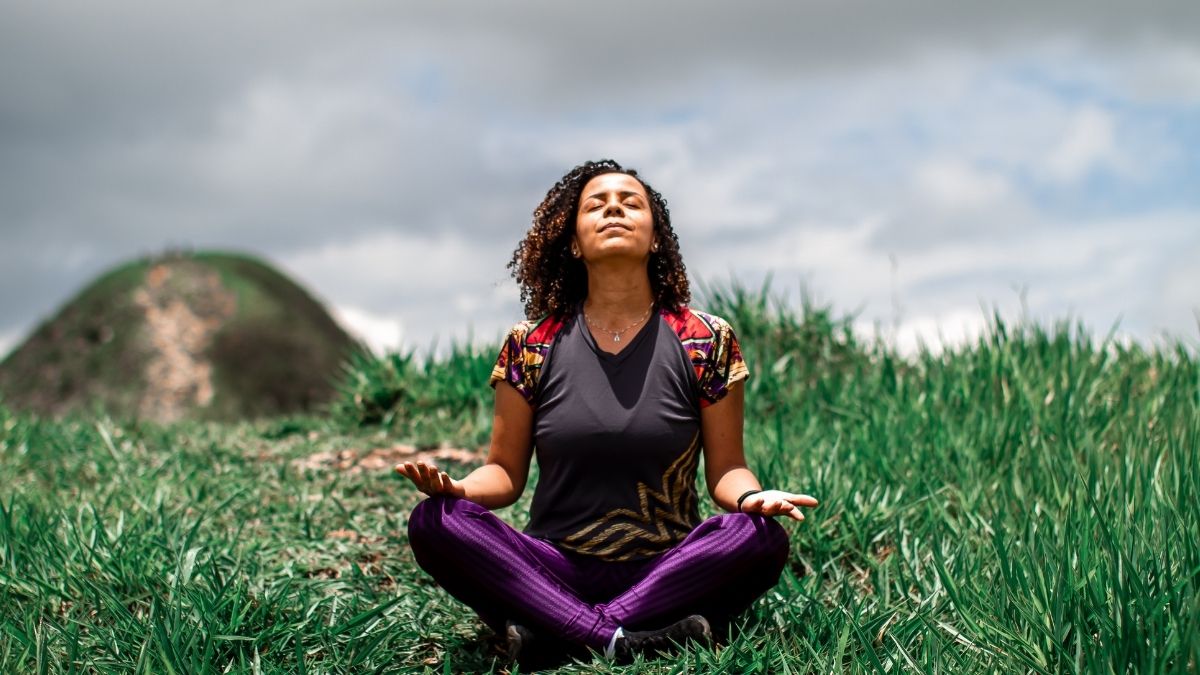
In their 2017 research review, Chadi G Abdallah and Paul Geha question if chronic pain and chronic stress are two sides of the same coin. But what does this mean? Well, the authors identify that the two phenomena overlap in important ways – both conceptually and physiologically.
Many people with chronic conditions like arthritis or migraine pinpoint stress as a common trigger for flare-ups. Moreover, a chronic condition – and the pain, discomfort and interference it presents – creates higher levels of stress. Stress, therefore, can be both a symptom and a cause.
Breaking the pain-stress cycle is tough, but with the right management techniques, it is possible to regain control. We all cope with stress in different ways. Some of us benefit from connecting with people while others like to challenge ourselves by setting goals or becoming immersed in a hobby. Crucially, to address stress, we need to avoid unhealthy habits, eat well, stay active and get adequate sleep.
In addition to this, there are various alternative stress relief methods to explore – from meditation, yoga and tai chi to biofeedback, aromatherapy, counselling and the ultimate stress buster – breathing.
How breathing reduces stress
Breathing is an automatic, involuntary function controlled subconsciously by the brain’s respiratory centre. Our breathing rate and pattern change when we experience certain emotions. When we’re calm, our nervous system is in a relaxed state and we breathe at a slower pace, however, when we become excited, anxious, stressed, panicked or afraid, our breath usually quickens. This is all part of the body’s ‘fight, flight or freeze’ response.
We have the power to change and control our own breathing, and many scientific studies have shown that this process can promote relaxation and reduce stress. Here are 4 breathing exercises (pranayamas) for stress relief you can try anywhere, anytime!
4 breathing techniques and exercises to try
Before you begin a breathing exercise, find a quiet, comfortable place to sit or lie down. If you choose to sit, keep your back straight and your feet flat on the ground. If you’re lying down on your bed, lay flat with a pillow under your head and knees.
When it comes to incorporating breathing techniques into your daily routine, it’s entirely up to you. There’s no fixed rule. However, a lot of people swear by a morning breathing practice as it can set you up for the day feeling energised, calm and refreshed. Evening wind-downs are also popular. If your stress triggers come at a particular time of the day – a work meeting, for example – you can prepare yourself with a breathing technique prior to the encounter.
1. Breath counting
According to mindfulness app Headspace, breath counting is the perfect breathing exercise for beginners. It’s simple yet effective.
- Start by counting 1 when you inhale, 2 when you exhale, 3 when you inhale again, 4 when you exhale again and so forth.
- Count up to 5, then repeat back at 1 to avoid getting distracted. It’s all about staying focused on your breathing and letting go of everything else around you.
- The Headspace team suggest setting a timer or a goal for the number of breath cycles you count.
2. Deep breathing
Deep breathing, also known as abdominal breathing, belly breathing or diaphragmatic breathing, is one of the most well-known breathing stress relief exercises. It will teach you how to take deep, bigger breaths, all the way into your belly.
- Breathe in slowly through your nose and let your belly fill with air.
- Breathe out through your nose.
- Place one hand on your belly, just below the ribs, and place the other hand on your chest.
- As you breathe in, you’ll be able to feel your belly rise and as you breathe out, you’ll feel your belly fall and lower.
- Do this several times until you have a calming rhythm. You may wish to count to 4 as you hold your breath to achieve consistency.
You can watch this deep breathing exercise demonstration from John Hopkins Rheumatology.
3. Alternate nostril breathing
Alternate nostril breathing is a common yoga and meditation breath control practice. In Sanskrit, it’s known as nadi shodhana pranayama, which translates as “subtle energy clearing breathing technique.”
- In a sitting position, ensure your spine is long and rest the backs of your hands on your knees with your palms facing up towards the ceiling.
- Bring your right hand up with your index and middle finger touching and bend those finders in towards the palm.
- Place your thumb against your right nostril to cover it and inhale through the left nostril.
- Then move your hand to place your ring finger and little finger against the left nostril as you release the thumb and exhale out through the right nostril.
- Inhale through the right nostril and swap over and exhale through the left.
- Repeat the full process two times or longer if you’re comfortable. Your breath should be smooth and consistent.
Check out this alternate nostril breathing exercise demonstration from intosport.
4. Lion’s breath
Lion’s breath is a unique breathing exercise that focuses on the exhale of the breath. It helps you relax, let go and have some fun. As the name suggests, this type of breathwork allows you to embrace your inner lion. Don’t be afraid to roar!
- Firstly, find a comfortable seating position. Lean forward slightly, brace your hands on your knees or the floor and spread your fingers wide.
- Inhale through your nose with your mouth closed.
- Open your mouth wide and stick out your tongue as much as you can, stretching it down toward your chin.
- Exhale forcefully with an audible “ha” sound, feeling the breath come from deep within your abdomen. Keep your tongue out for the entire exhale.
- Relax your face and breathe normally for a few breaths.
- Repeat lion’s breath 4 to 6 times.
- Finish the exercise by breathing deeply for a couple of minutes.
Here’s a lion’s breath YouTube demonstration from Yoga International.
Other Natural Ways to Soothe Aches and Pains
We hope you enjoy these stress-busting breathing techniques! If you suffer from chronic pain, you can also explore our range of fast-acting To Better Days active patches, which combine vitamin D and dextrose to provide topical, targeted pain relief. There are various sizes for big joints and small joints, as well as Migraine Recovery Patches, featuring vitamin D, ginger extract, chamomile extract and lavender powder.




